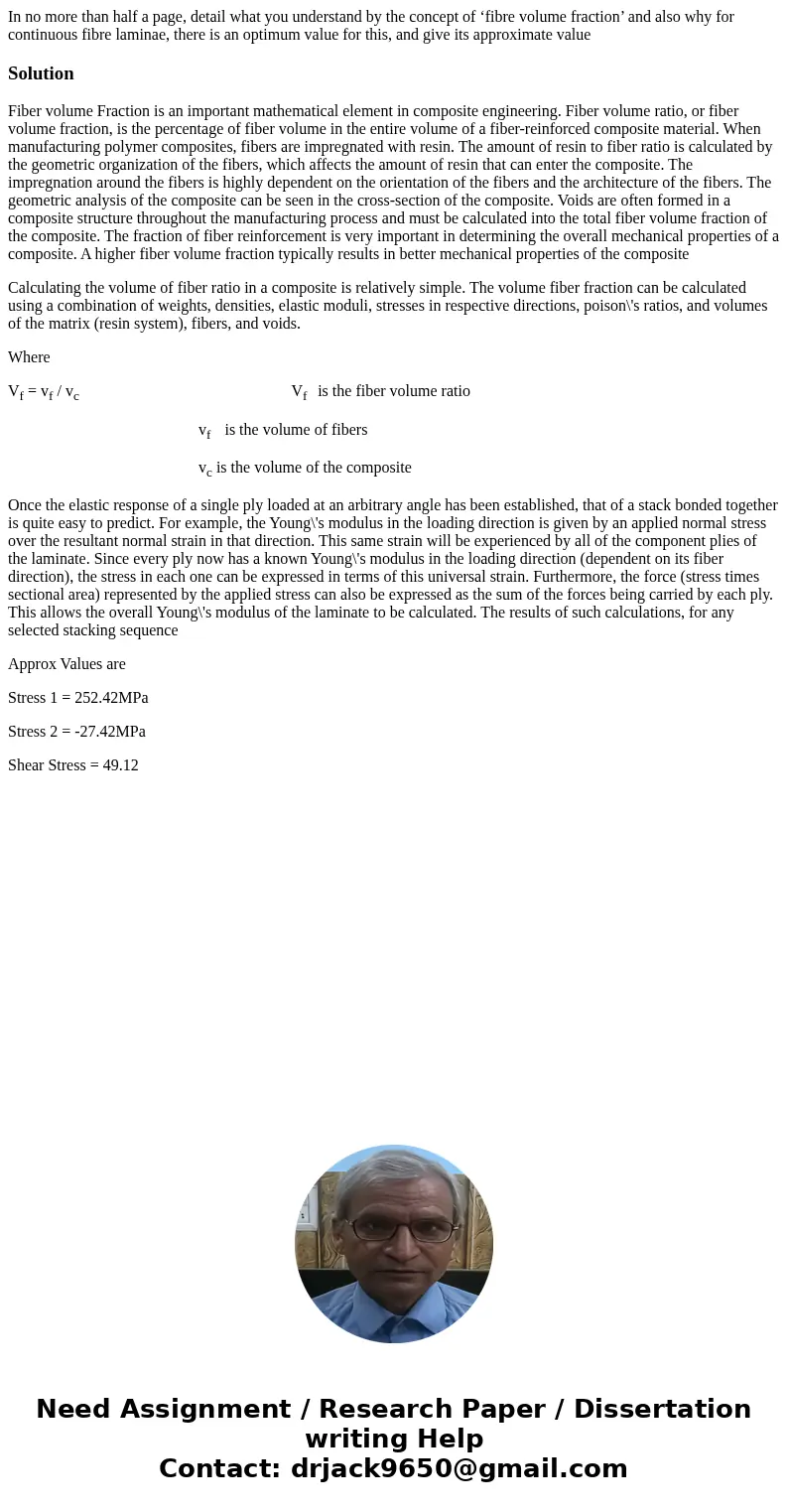In no more than half a page detail what you understand by th
In no more than half a page, detail what you understand by the concept of ‘fibre volume fraction’ and also why for continuous fibre laminae, there is an optimum value for this, and give its approximate value
Solution
Fiber volume Fraction is an important mathematical element in composite engineering. Fiber volume ratio, or fiber volume fraction, is the percentage of fiber volume in the entire volume of a fiber-reinforced composite material. When manufacturing polymer composites, fibers are impregnated with resin. The amount of resin to fiber ratio is calculated by the geometric organization of the fibers, which affects the amount of resin that can enter the composite. The impregnation around the fibers is highly dependent on the orientation of the fibers and the architecture of the fibers. The geometric analysis of the composite can be seen in the cross-section of the composite. Voids are often formed in a composite structure throughout the manufacturing process and must be calculated into the total fiber volume fraction of the composite. The fraction of fiber reinforcement is very important in determining the overall mechanical properties of a composite. A higher fiber volume fraction typically results in better mechanical properties of the composite
Calculating the volume of fiber ratio in a composite is relatively simple. The volume fiber fraction can be calculated using a combination of weights, densities, elastic moduli, stresses in respective directions, poison\'s ratios, and volumes of the matrix (resin system), fibers, and voids.
Where
Vf = vf / vc Vf is the fiber volume ratio
vf is the volume of fibers
vc is the volume of the composite
Once the elastic response of a single ply loaded at an arbitrary angle has been established, that of a stack bonded together is quite easy to predict. For example, the Young\'s modulus in the loading direction is given by an applied normal stress over the resultant normal strain in that direction. This same strain will be experienced by all of the component plies of the laminate. Since every ply now has a known Young\'s modulus in the loading direction (dependent on its fiber direction), the stress in each one can be expressed in terms of this universal strain. Furthermore, the force (stress times sectional area) represented by the applied stress can also be expressed as the sum of the forces being carried by each ply. This allows the overall Young\'s modulus of the laminate to be calculated. The results of such calculations, for any selected stacking sequence
Approx Values are
Stress 1 = 252.42MPa
Stress 2 = -27.42MPa
Shear Stress = 49.12

 Homework Sourse
Homework Sourse